
If there are generally accepted horror plants, then there are plants that seem “tender and fluffy” to everyone. First of all, it concerns the symbol of family well-being of the ficus, violets and all kinds of begonias. Indeed, and they do not always serve the masters of good service.
Ficus  This universal favorite, if it has grown excessively, is capable of turning an active, creative person into a lazy couch potato, whose field of activity is limited to a sofa and a TV.
This universal favorite, if it has grown excessively, is capable of turning an active, creative person into a lazy couch potato, whose field of activity is limited to a sofa and a TV.
Violet. 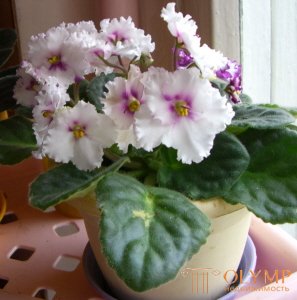 A dense band of tender violets will block the lonely lady to the path to family happiness. Why? Very simple: a large number of violets in the house creates such a feminine atmosphere that a man simply cannot survive there.
A dense band of tender violets will block the lonely lady to the path to family happiness. Why? Very simple: a large number of violets in the house creates such a feminine atmosphere that a man simply cannot survive there.
Begonia. 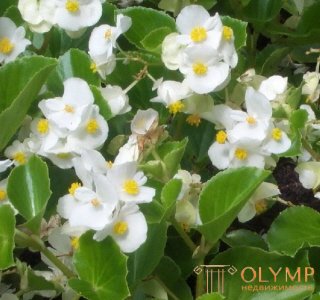 The same applies to begonias: these magical flowers, if they filled the dwelling of a lonely person, are able to “take away” from the owner of all loved ones. It is not by chance that single pensioners of any sex love to breed begonias.
The same applies to begonias: these magical flowers, if they filled the dwelling of a lonely person, are able to “take away” from the owner of all loved ones. It is not by chance that single pensioners of any sex love to breed begonias.
You can meet indoor plants in almost every house or apartment, as well as in all public places: in cultural and shopping centers, in institutions and organizations, in offices, schools, kindergartens, polyclinics, etc. With them, any room seems comfortable and well-groomed, but the flowers are different, and not all of them can be kept there, where people are constantly located, and especially small children - you should know something about such flowers.
On the other hand, a lot of superstitions have accumulated so far and will be associated with indoor flowers, and most of them, if not all, are not grounded. If you believe such signs, it turns out that even useful plants can cause harm or trouble, and even cause a tragedy - such beliefs also occur.
About the dangers of indoor flowers really worth knowing, but you need to evaluate their real danger, not mystical, although many people think of mysticism and superstitions.
Indisputably, poisonous plants are truly dangerous: among them there are so toxic species that one touch to them can cause burns or swelling. Of course, such plants can be watered and replanted carefully, with gloves, and constantly wash their hands after them, but you cannot explain this to small children or pets. Therefore, it is not worth the risk to keep them at home, especially since safe indoor plants are also sufficient.
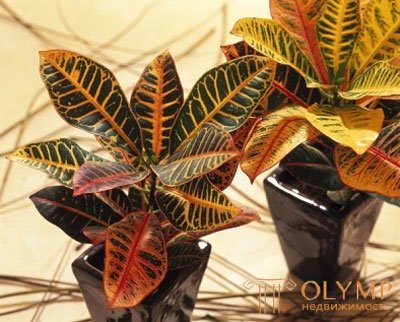
The croton family of the euphorbia indoor plant is very dangerous , although it looks beautiful - it is a flower with large leathery leaves, shiny and bright, yellow-green, dark green - there are many types of crotons. Croton sap is very poisonous and causes burns on the skin, but this is not the worst thing: if the juice gets into the blood, then the person may not survive - the poison of the croton is deadly. Of course, such a plant is not worth keeping at home, and you can completely do without its beauty, although some people believe that it protects people from negative energy and contributes to clarity of thinking, but is it because of these properties it is worth risking health and life?
The philodendrons of the aroid family are very beautiful: their leaves are also bright and shiny, of very different shapes, but they are rich in poisonous acids. It is enough to swallow a piece of such a beautiful leaf, and it can end in the most severe poisoning - this plant is definitely not worth keeping where there are children and animals.
The beauty of the leaves is different and dieffenbachia , but it also does not need to start where there are children: juice Dieffenbachia also causes severe poisoning and burns. However, this plant is also considered useful: Dieffenbachia cleans the air of the premises from all sorts of chemicals - benzene, trichlorethylene, formaldehyde, and others, so it costs to grow where there are only adults - for example, in hazardous industries.
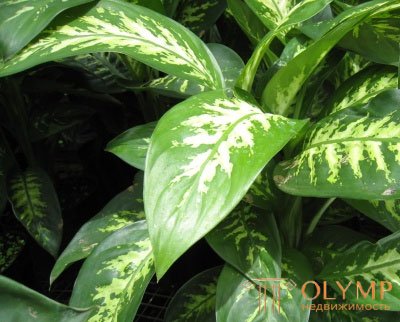
Steller dwarf is considered a medicinal plant, but they can only be treated under the supervision of a physician; at home, by accidentally swallowing a piece of a sheet of steller, it is possible to severely burn her vocal cords with poisonous juice - so that they swell up and even become numb. The Rodea Japanese possesses the same properties, the plant of the lily family - the Japanese islands are indeed its homeland.
If an oleander grows in a room, it can bloom nicely and for a long time, but the fragrance of its flowers causes dizziness in many people, and the milky juice is deadly. Once inside a human or animal body, it causes a heartbeat, loss of consciousness and apnea: it is clear that in families where there are small children and animals, the presence of oleander is unacceptable.
Azaleas bloom very brightly and beautifully - many women like them, but if a piece of azalea leaves falls into the stomach, cramps and colic begin - the plant is highly toxic.
The Gesner Tulip is a perennial plant, and blooms with beautiful red, pink, white and yellow buds; used in medicine, but they are not allowed to be treated on their own, as it is very poisonous. If this tulip grows in the room for several years, the people living there can lose their hair and everything can end in baldness.
Gentle and capricious mimosa bashful attracts women with its “fluffy” spherical lilac flowers, but it affects health in much the same way as Gesner’s tulip: it causes poisoning in animals and hair loss in people.
The next group of harmful plants does not cause such serious consequences, but causes malaise and chronic diseases, although people often cannot understand what caused their health problems.
Gentle and graceful lilies emit a lot of carbon dioxide at night, so in the morning those in the apartment may have a headache, especially if the flower is in the bedroom. Insomnia gradually manifests itself - it is provoked by the strong aroma of lilies, so you can keep them in the apartment, but not too much - one flower is enough, and away from the bedroom - in the living room or hallway. Orchids and ferns have the same properties.
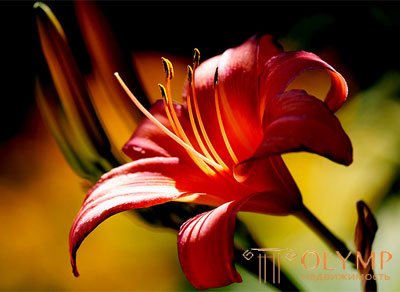
Tuberoses are beautiful and fragrant, they bloom for a long time, but hypertensive patients and cores should not be kept in the house: their aroma of flowers of tuberose causes dizziness and depression.
Allergic reactions can also be caused by ordinary geraniums, but this does not mean that it should be abandoned: geranium has many medicinal properties, but before planting it at home, you must make sure that you calmly tolerate its smell.
Hortensia is also a beautiful and healing plant, and is even used in medicine, but in some people it causes skin allergies - there are always people with individual intolerance.
And how should we treat the signs and beliefs associated with indoor flowers?
What can you not hear from friends and acquaintances: for example, many women believe that cacti cause a strong tendency towards alcoholism in men, and ordinary ivy contributes to her husband's hikes “to the left” - I wonder how indoor flowers can tempt men like that?
Another sign: if you keep in your home not flowering plants - there are many indoor plants, the beauty of which lies in the leaves - then wealth and wealth will bypass you. It turns out that abundantly flowering plants act in the opposite way? So, in order to have money in the house, you need to have a whole greenhouse of plants with bright flowers, and only this will be enough?
If a person considers plants to be “guilty” of his problems, and try to solve these problems by throwing out some indoor flowers and multiplying others, he may become a good florist, but he will hardly wait for wealth and personal happiness: both for the first and for the second need to make their own efforts, and not rely on force will take.
Unfortunately, in the modern world, people just dump their problems and failures on anyone and anything, like hundreds of years ago - for example, as in the Middle Ages, just not to take responsibility for their lives for themselves.
But after all, omens come true, and some people may cite a lot of examples, and it is difficult to dismiss them, but somewhere in the depths of their souls there is a fear: what if it's true? So, any signs "work" only if a person stubbornly believes in them, and even a simple fear can lead to trouble. Thoughts are actually material - even schoolchildren know about it today, and you should not pretend that all this is nonsense or mysticism is quite a simple law of nature. Try to check it yourself: give up negative thoughts for at least one day, and replace them with positive ones - this will not be so easy, but the world around will begin to change literally before our eyes - for the better.
Choosing plants for home, you should be guided by common sense: for example, if you grow large tropical plants in a small area, or a lot of climbing and lianas, the atmosphere in the room will be unhealthy. Parasitic plants, of which there are many in nature, should not be kept at home either - their energy is not the best; and many plants of the same species also should not be bred. And even any flowers that grow in your home, should like all family members - and then everything will be in order.
Что бы оставить комментарий войдите
Комментарии (0)